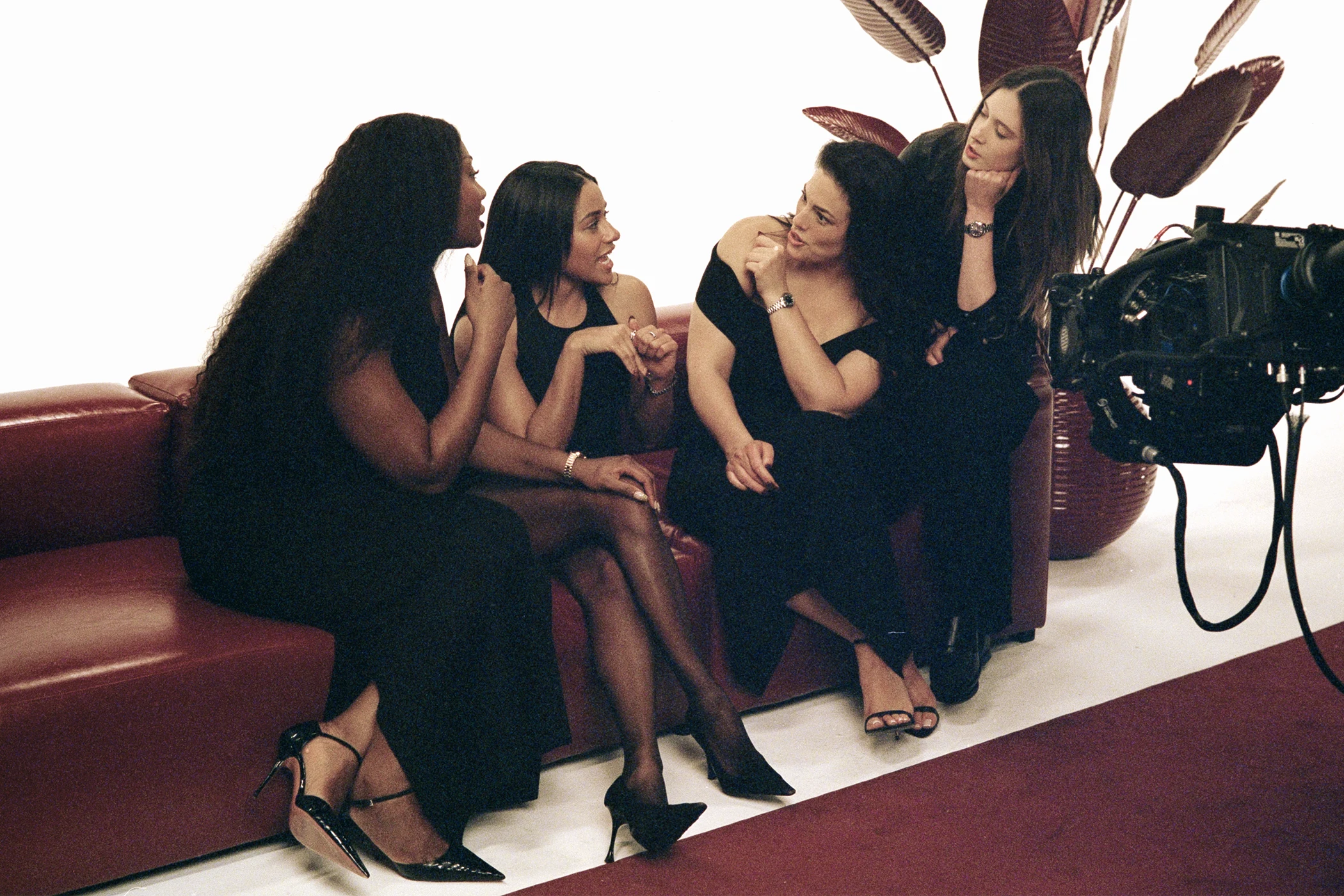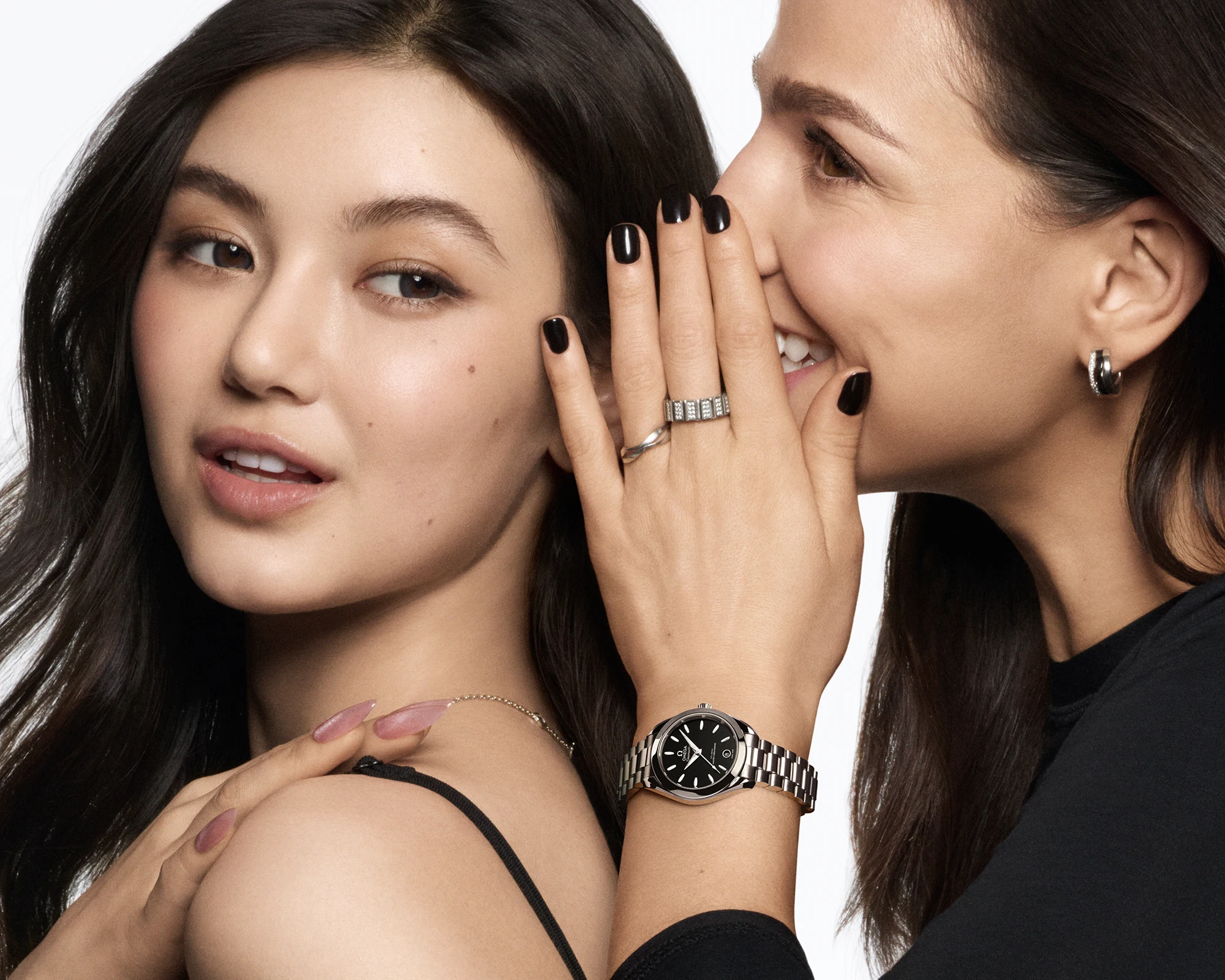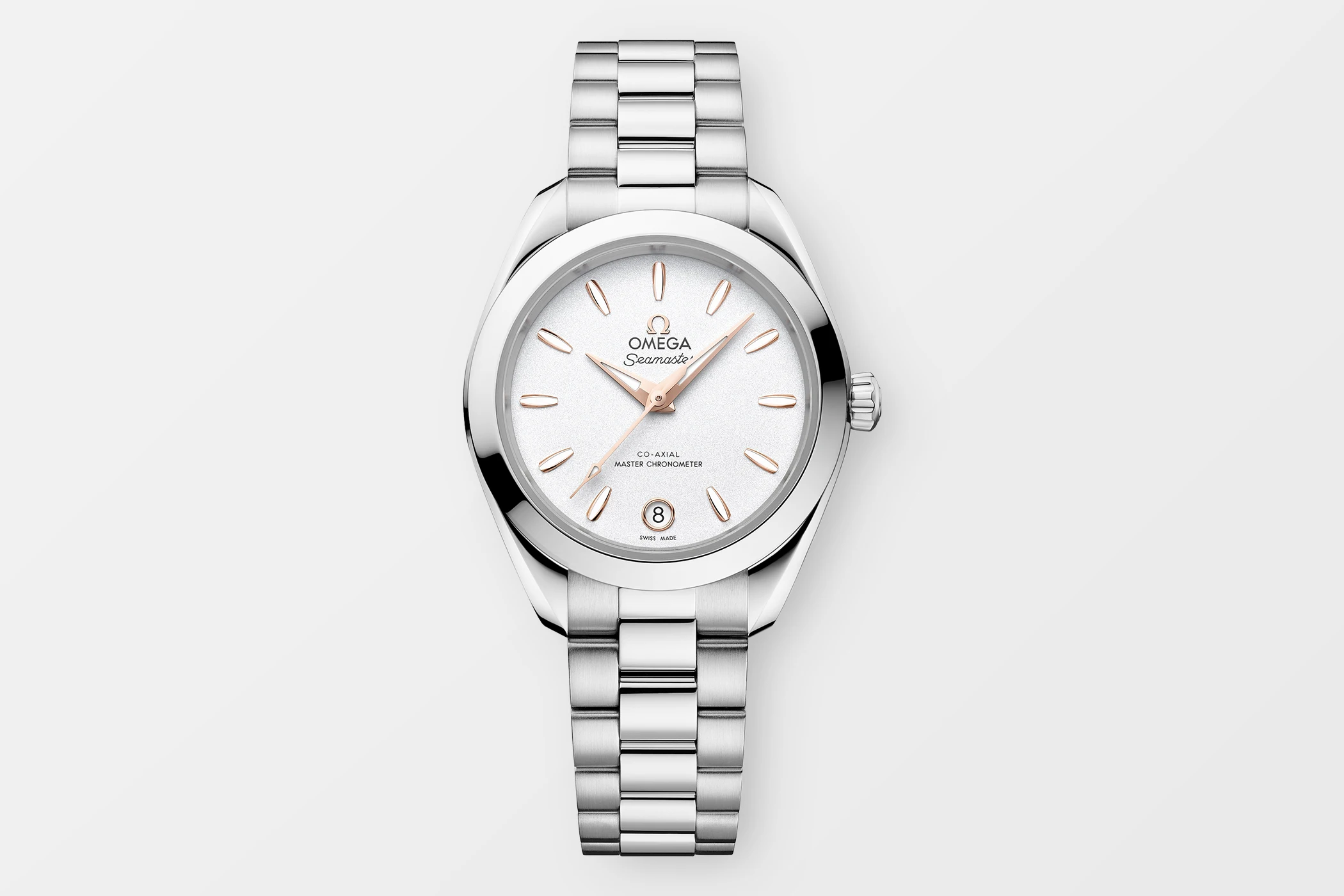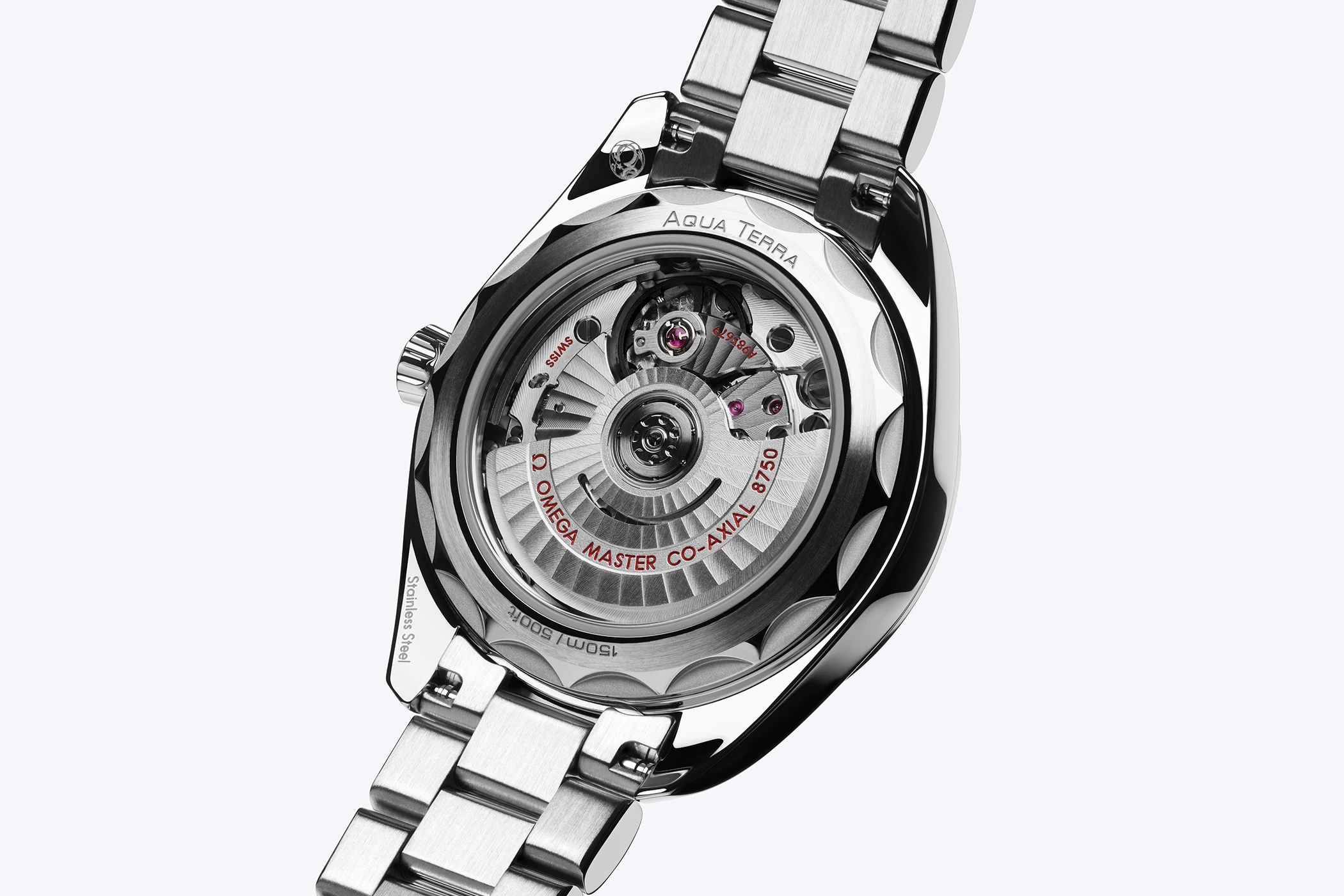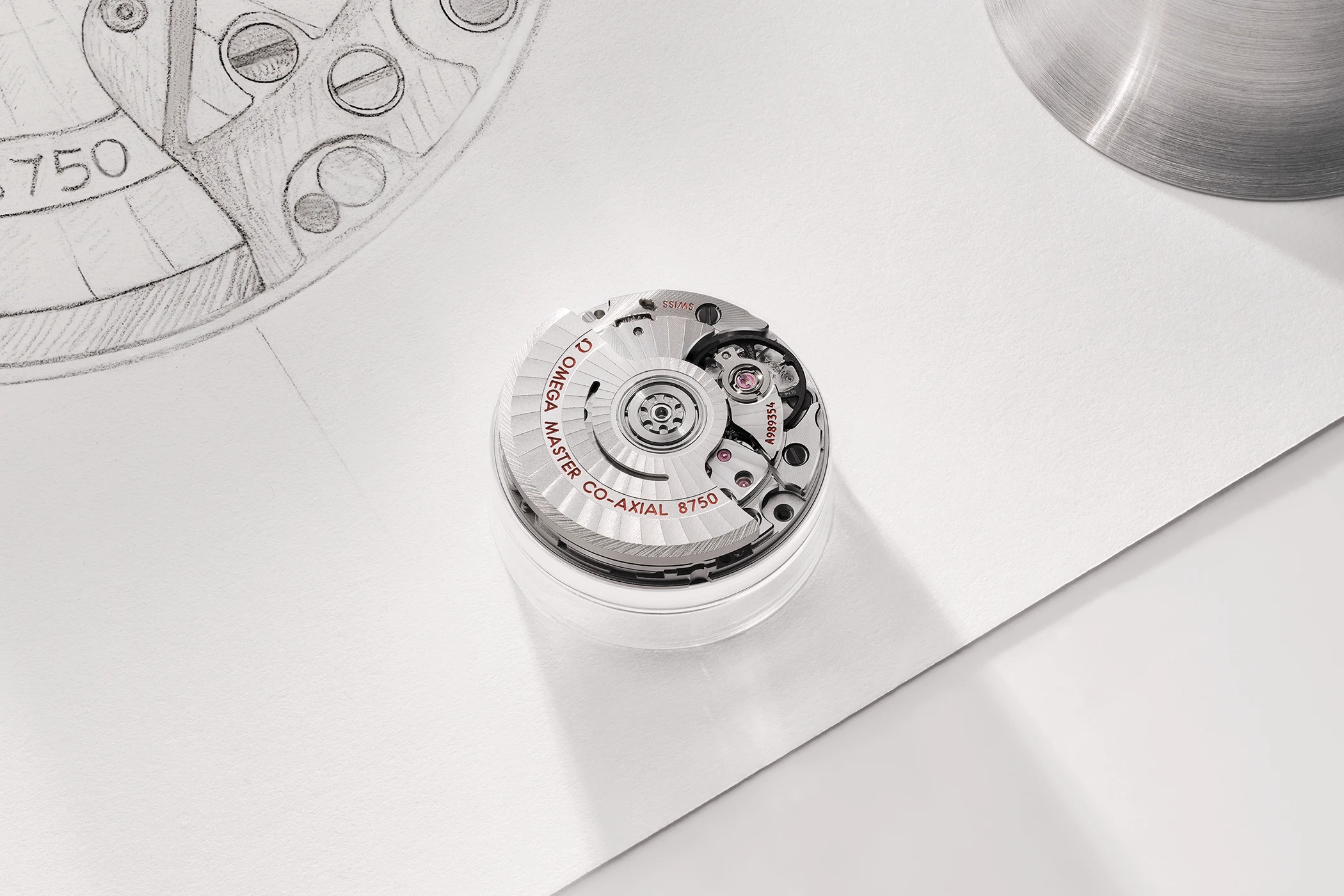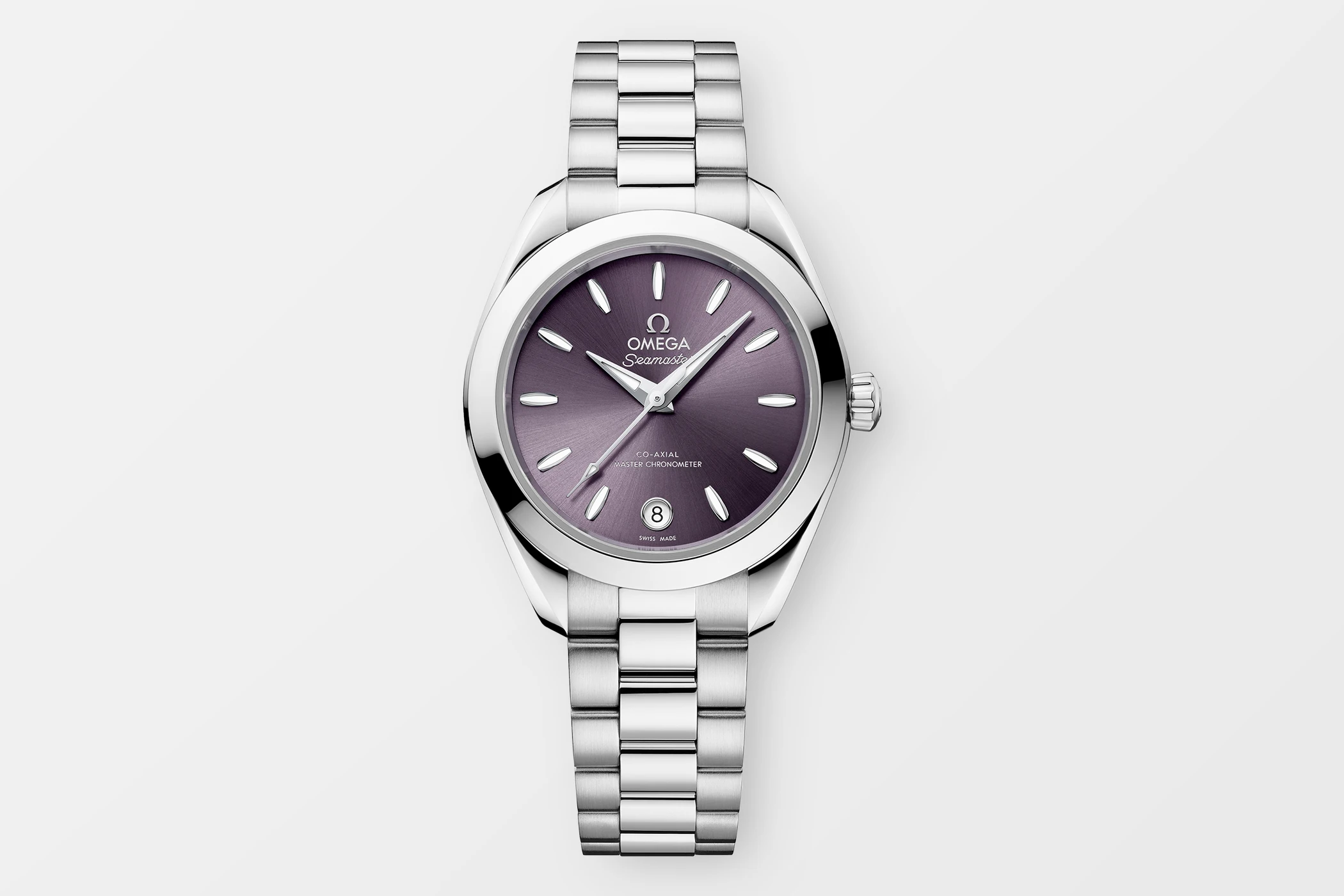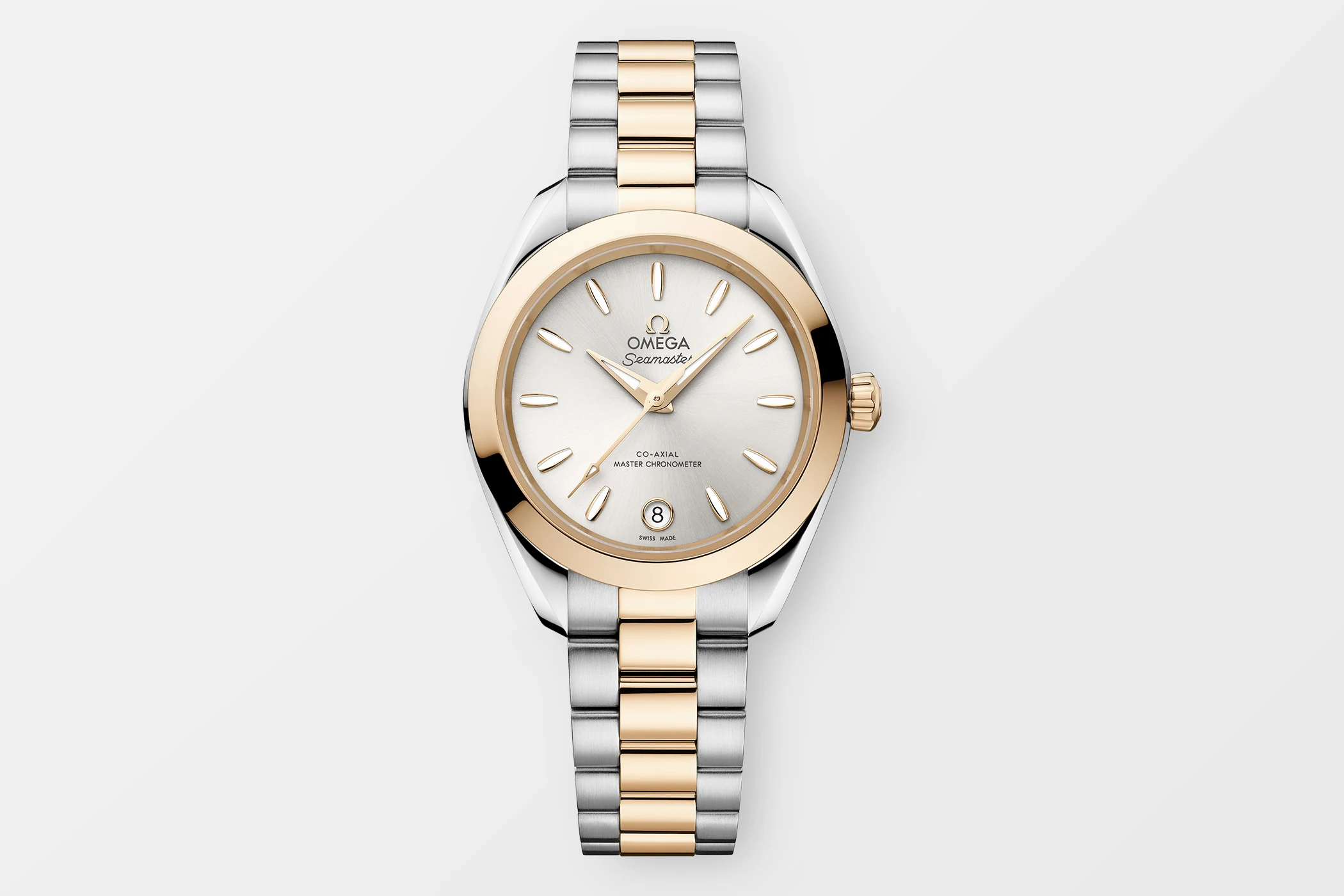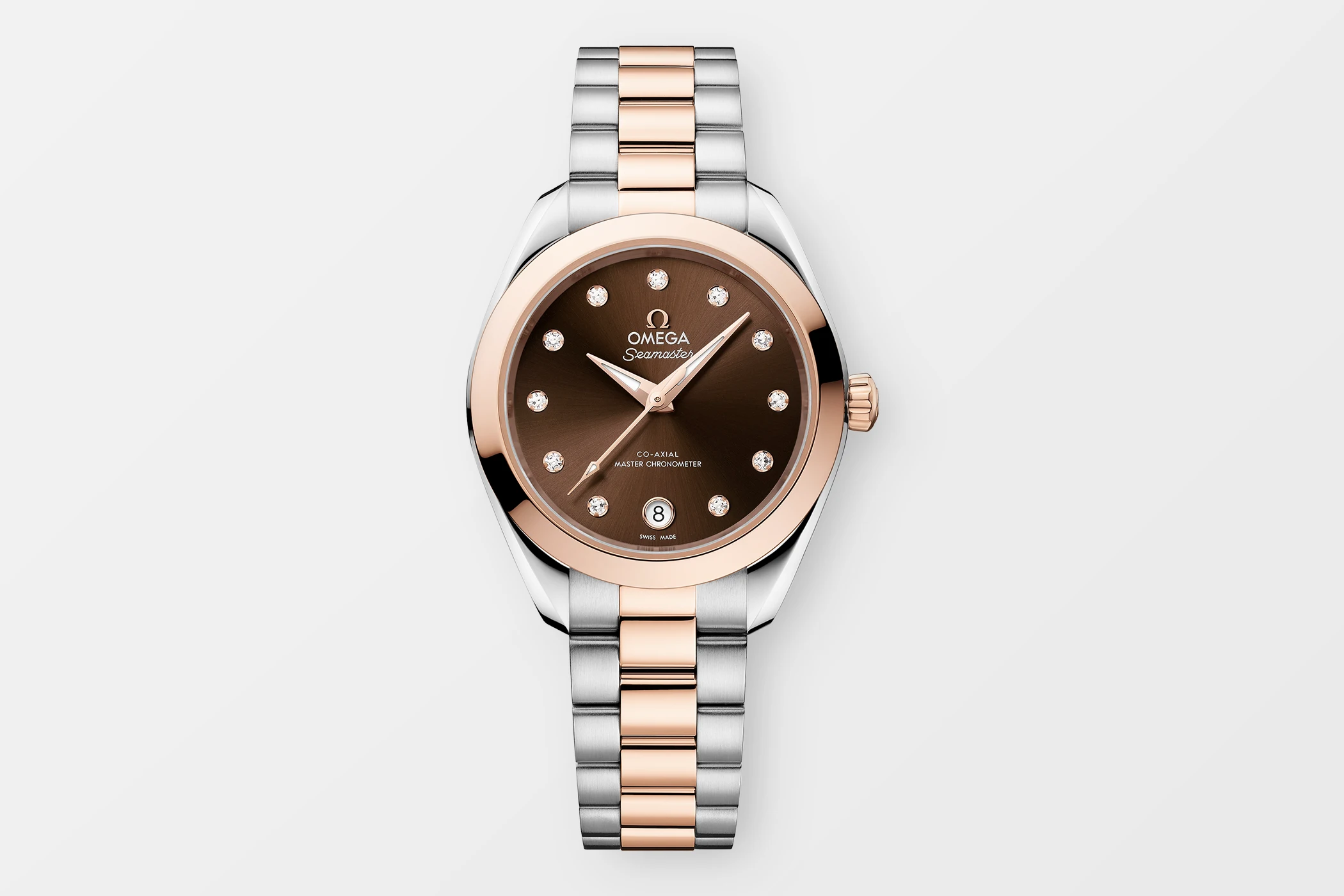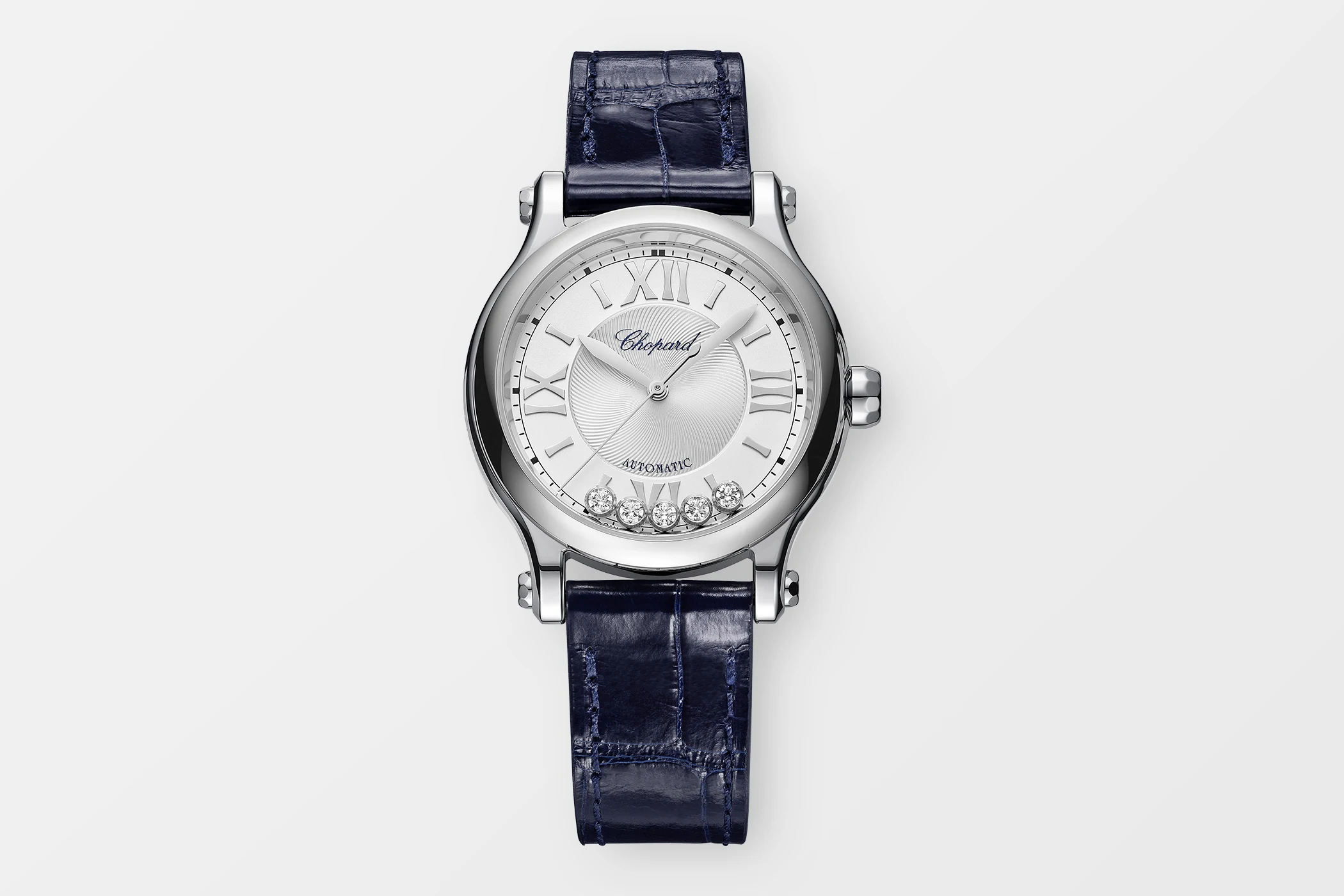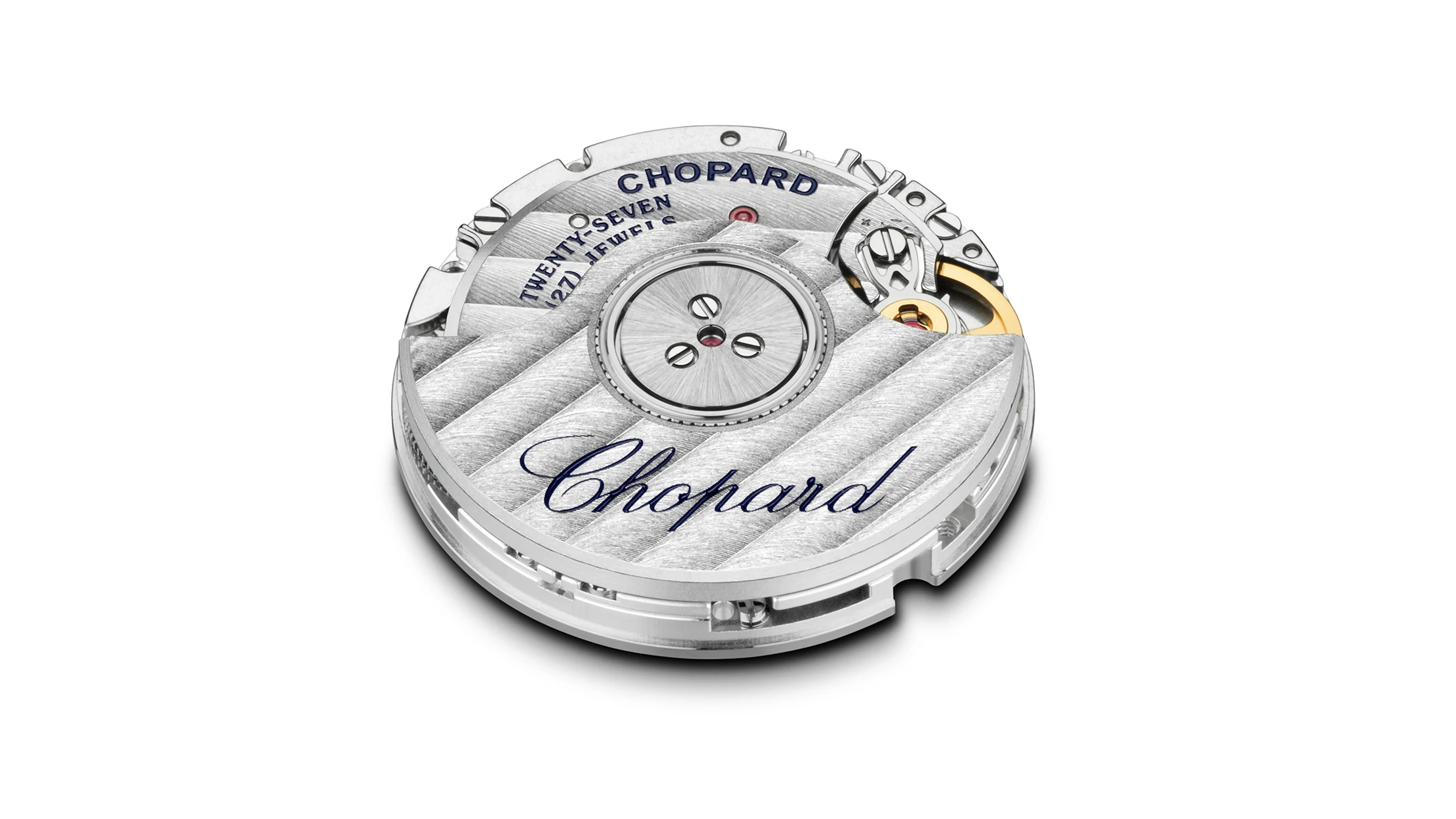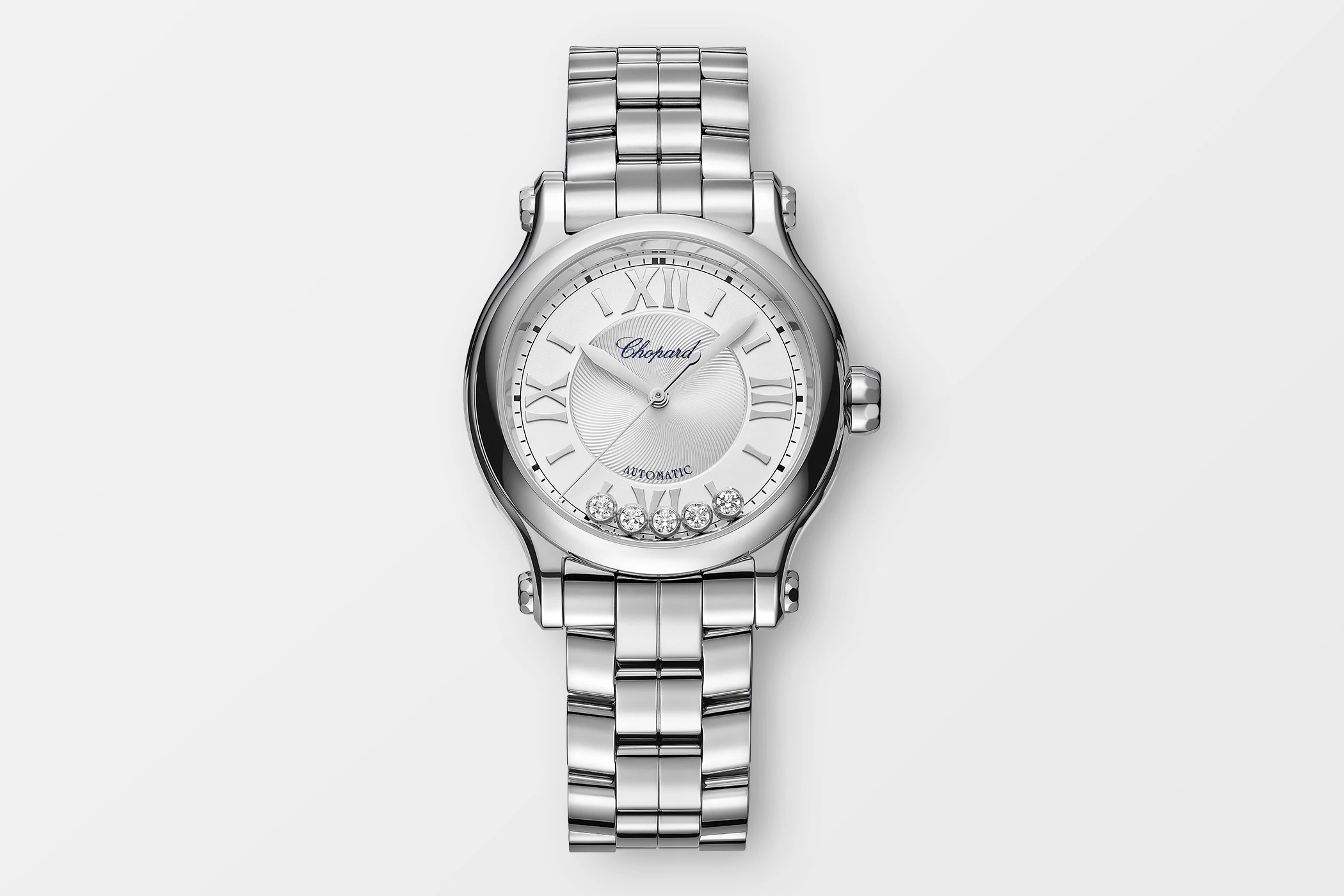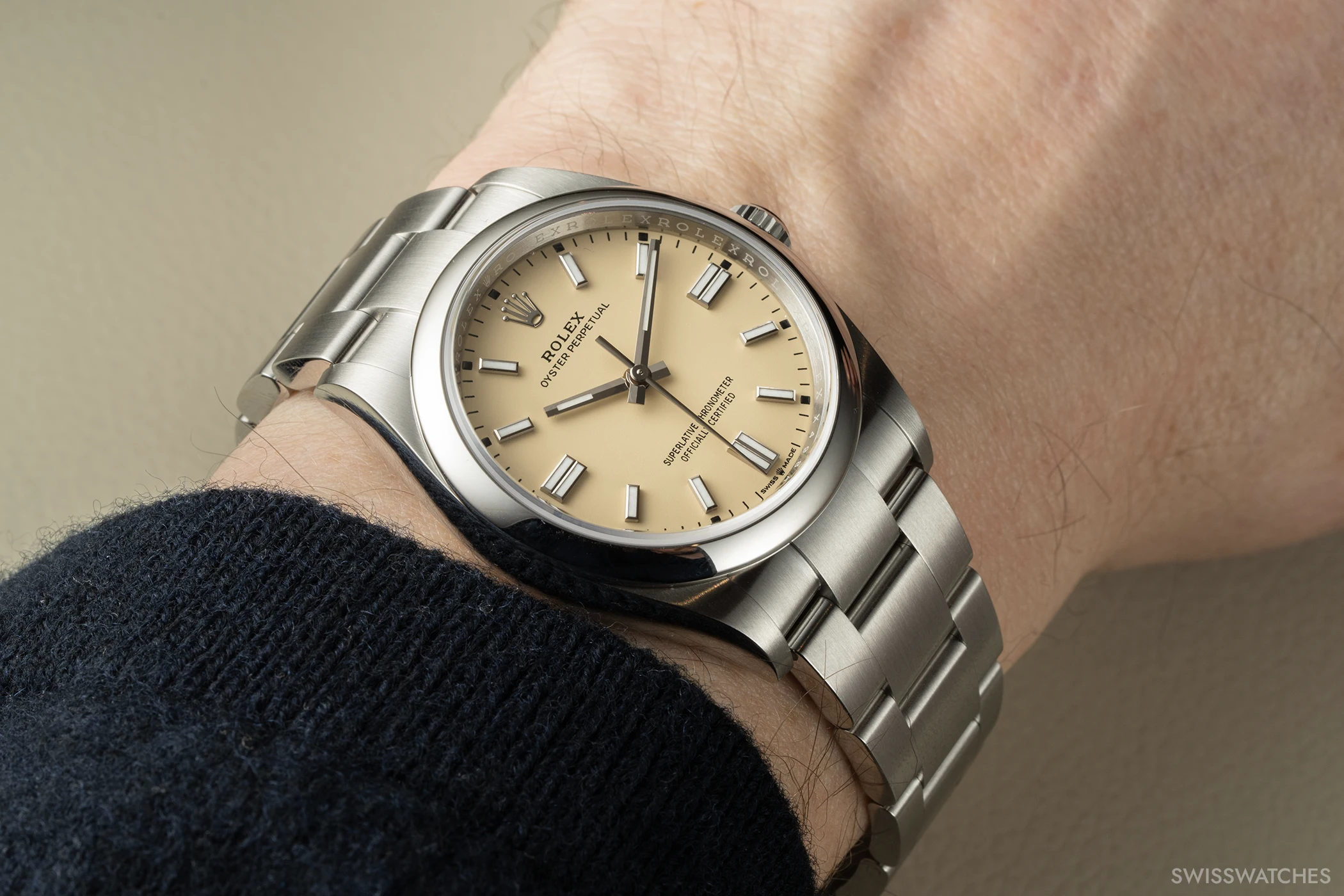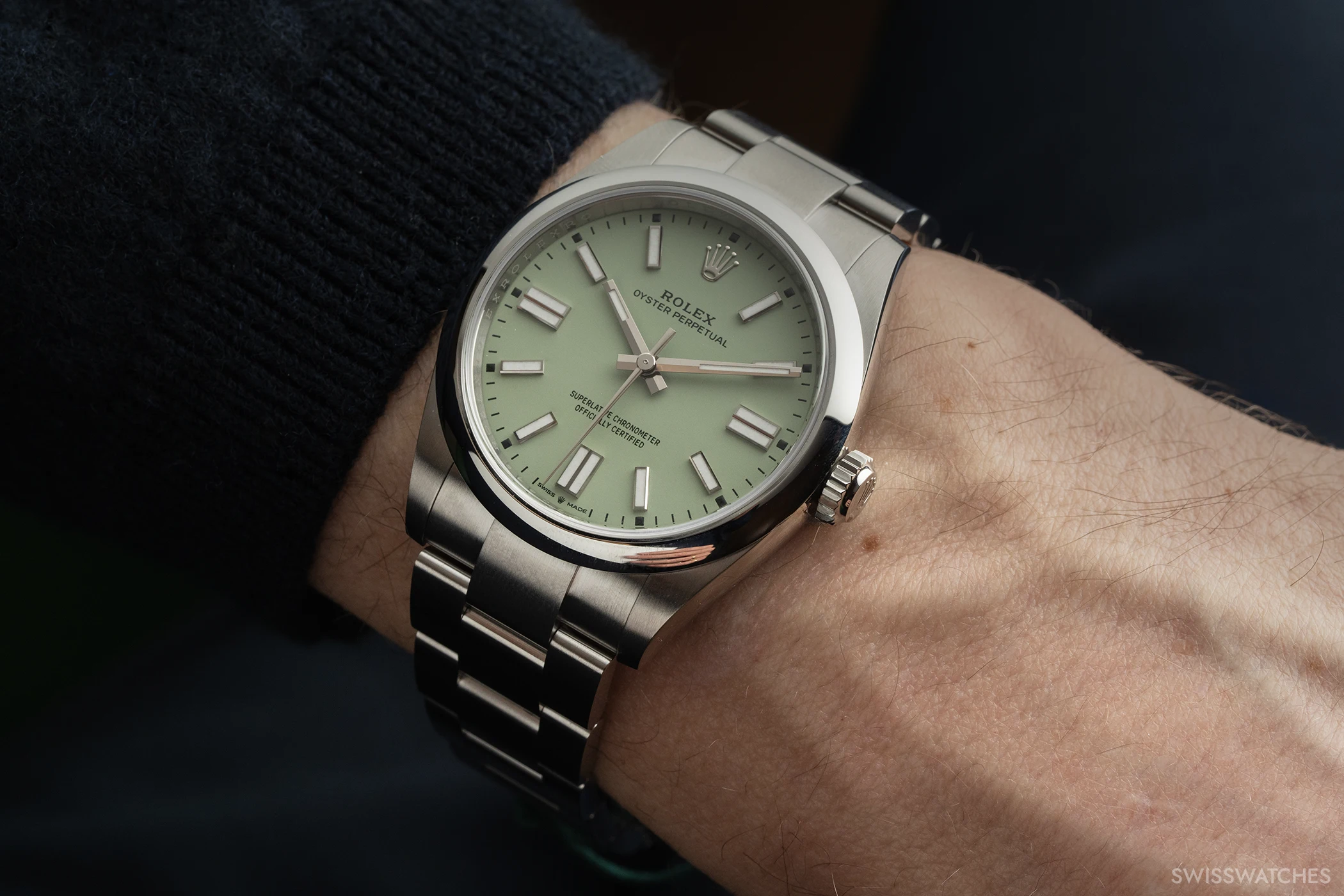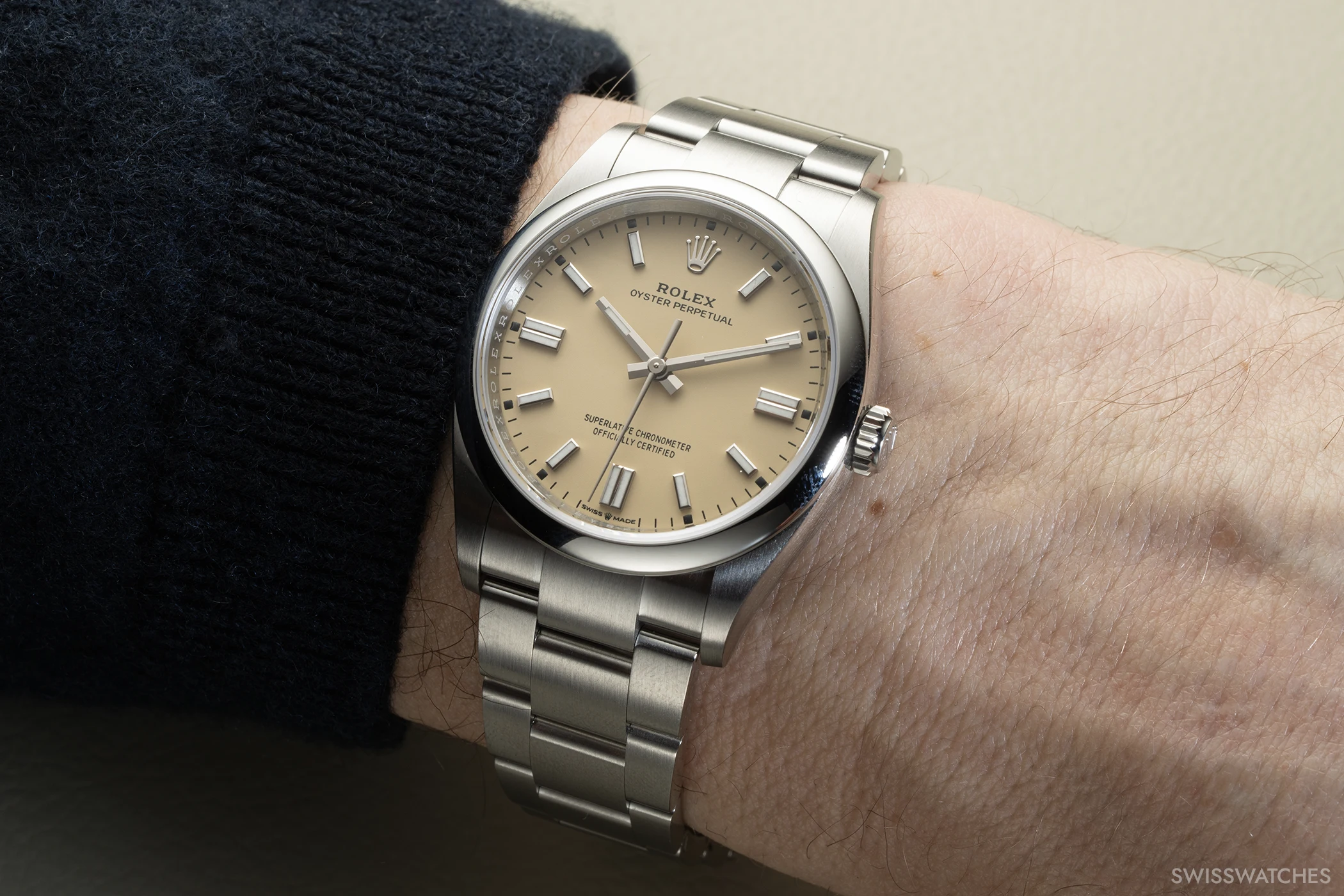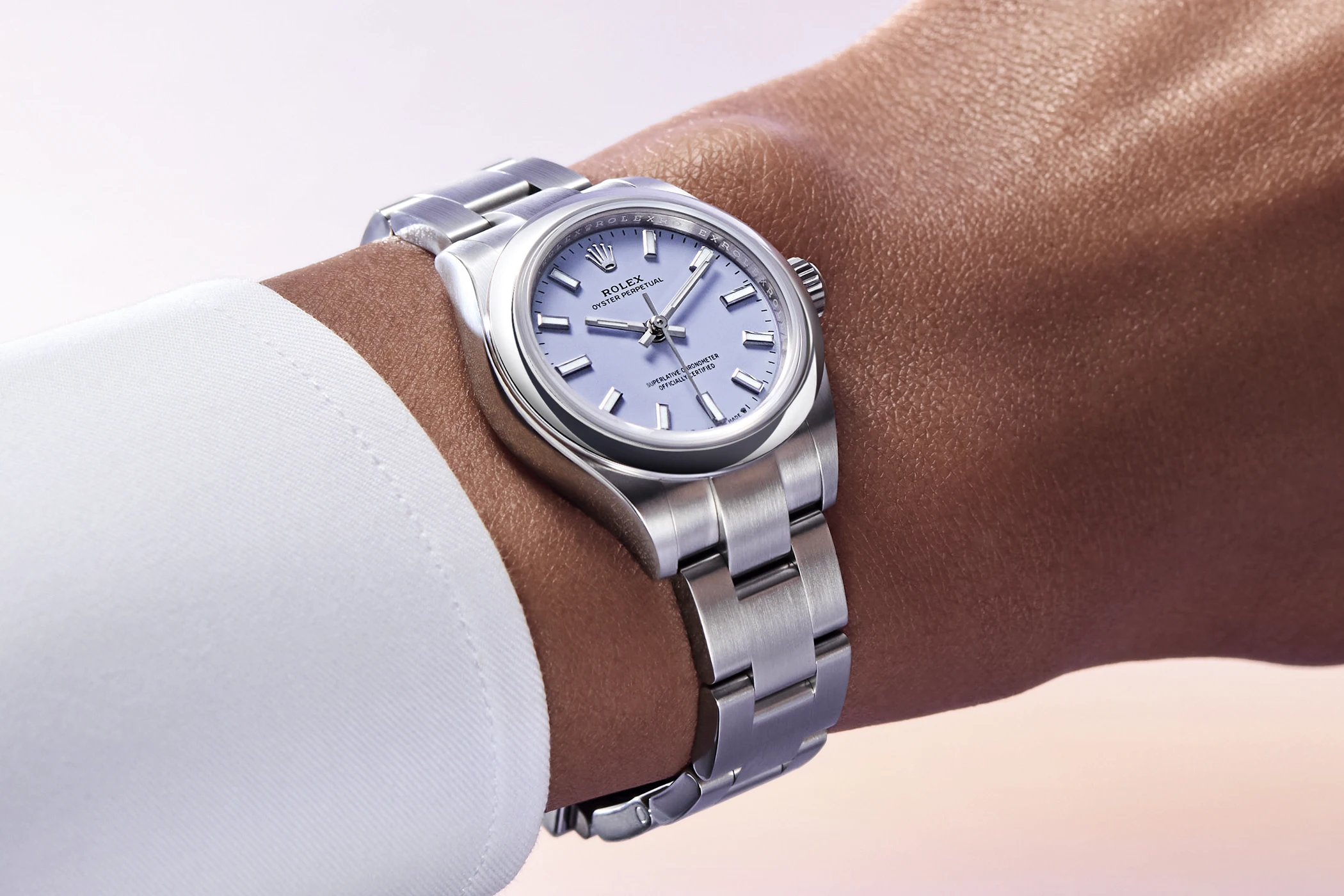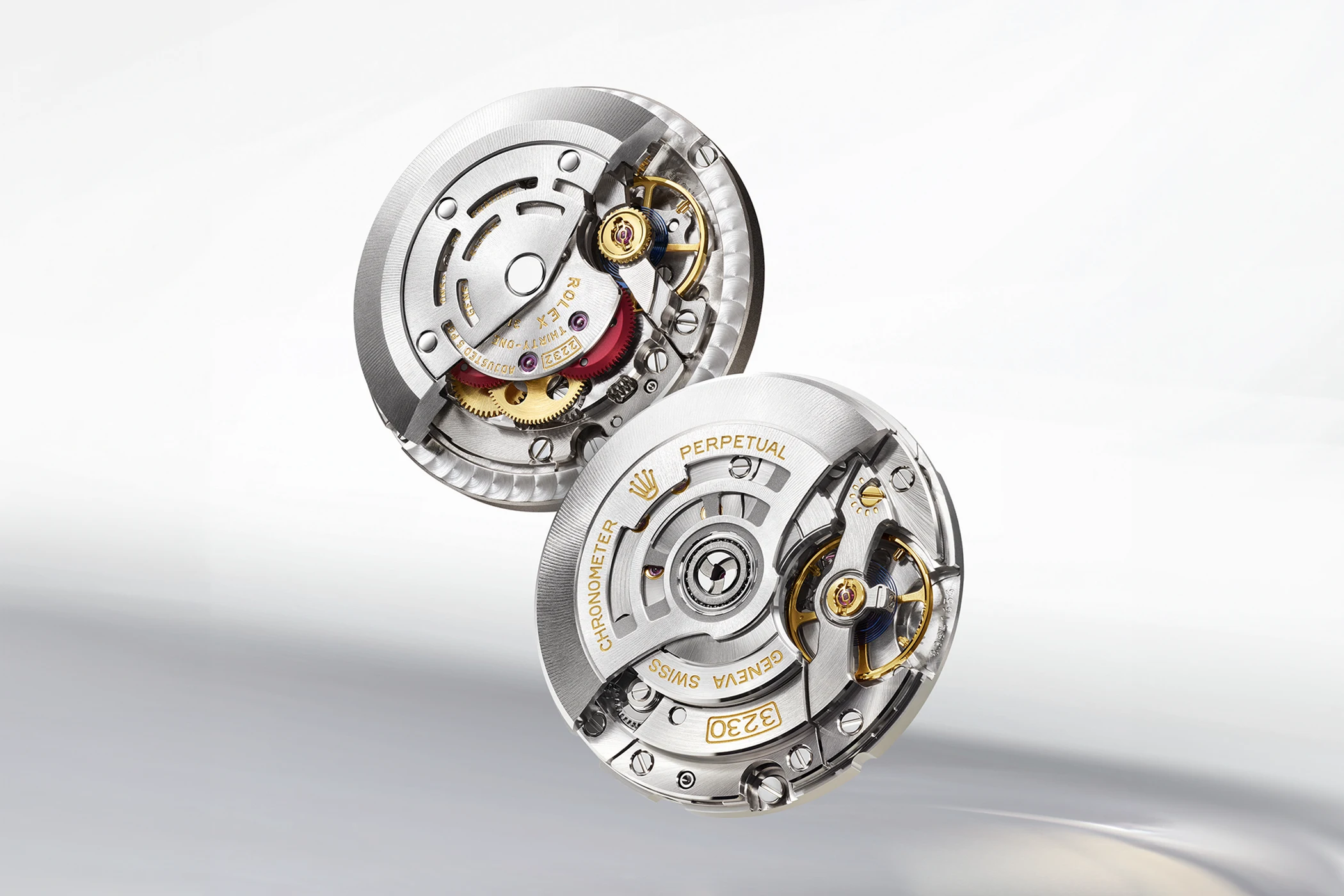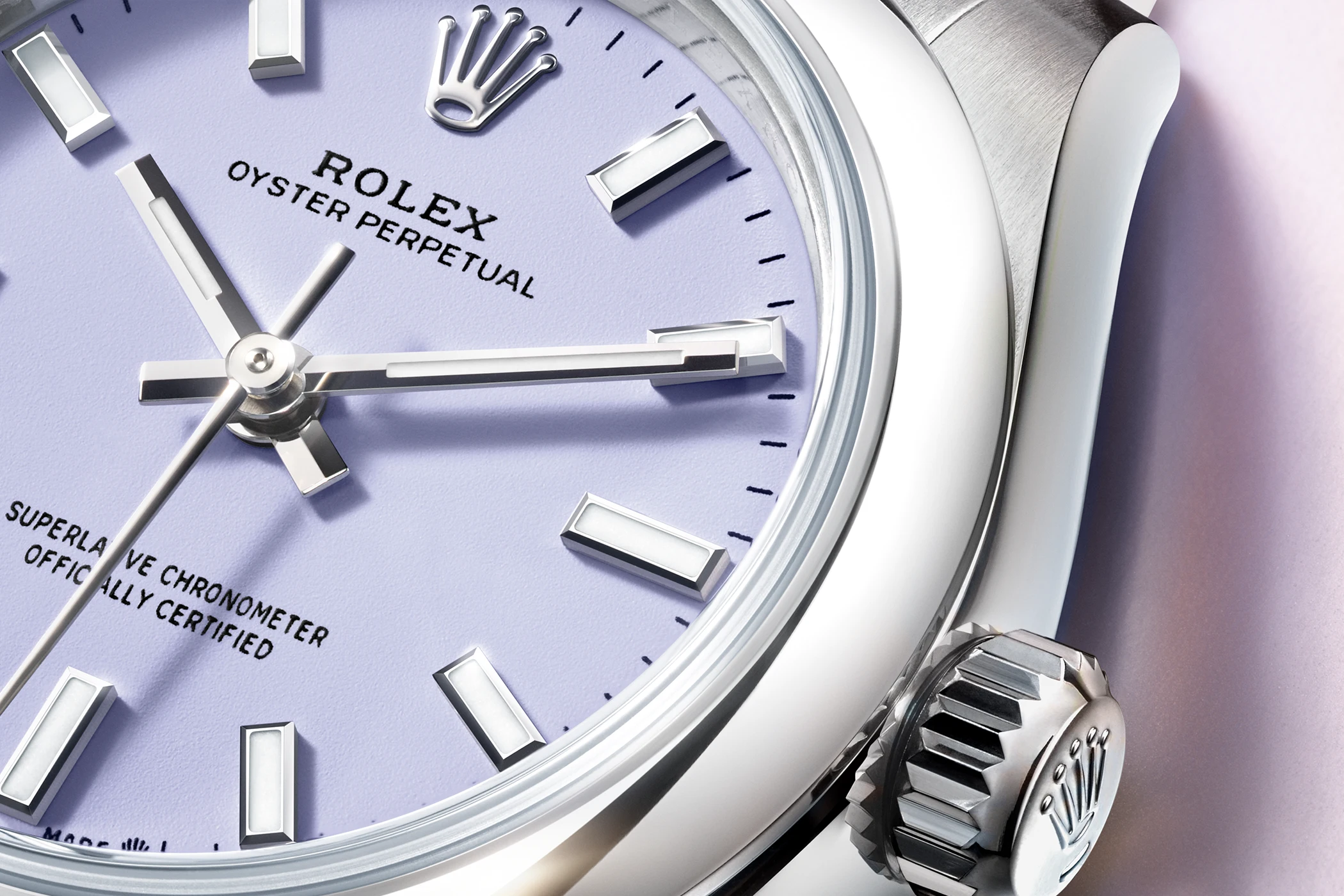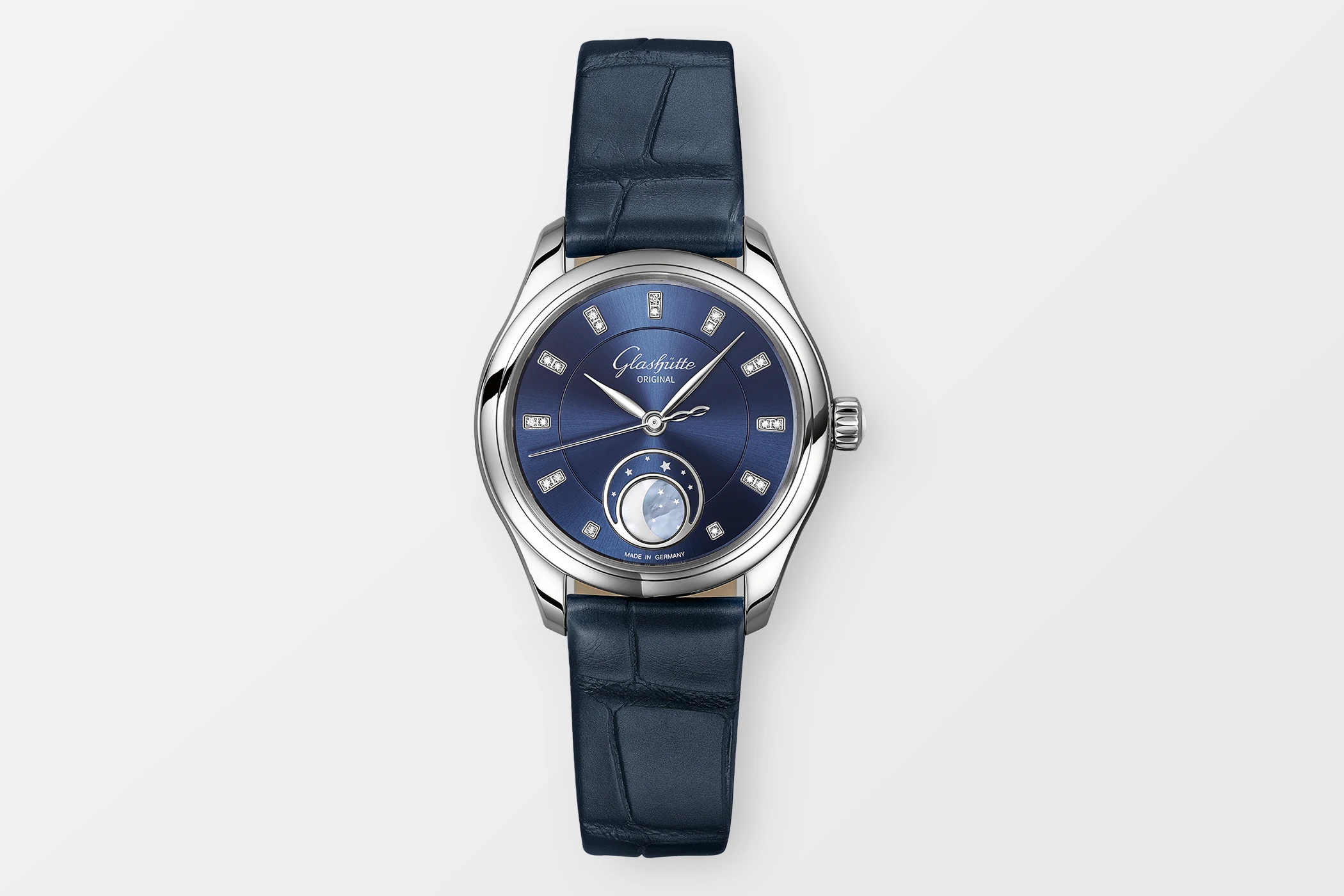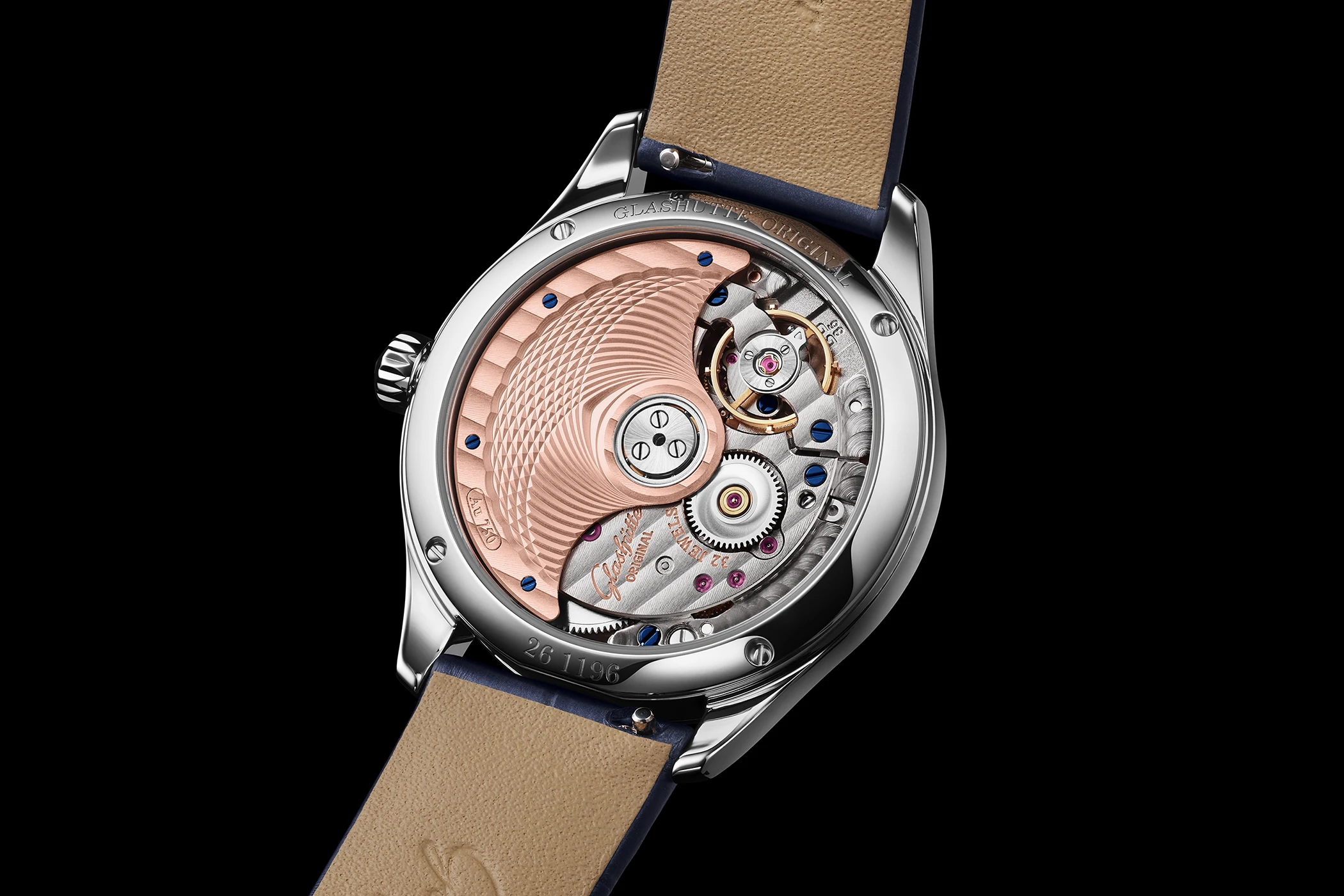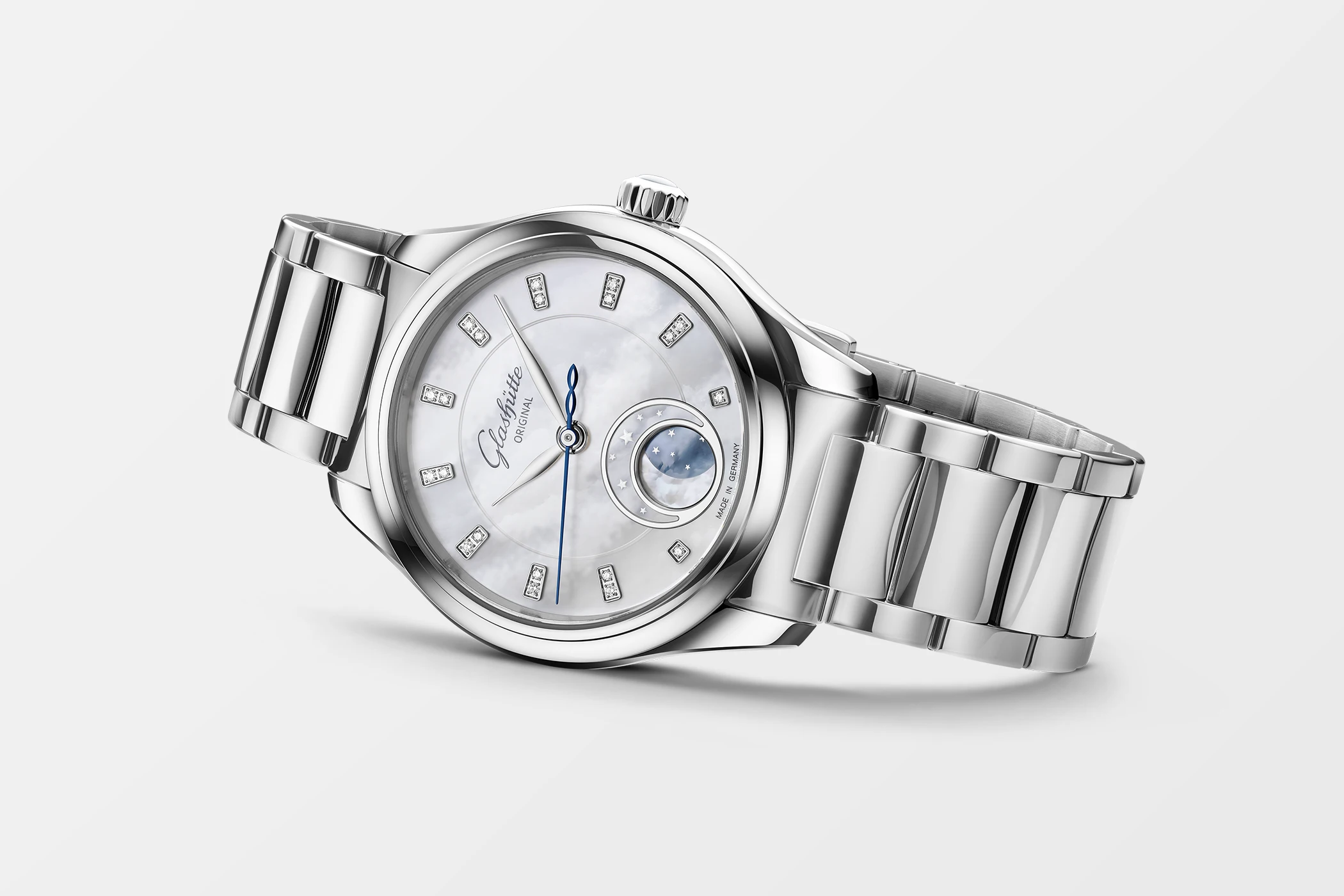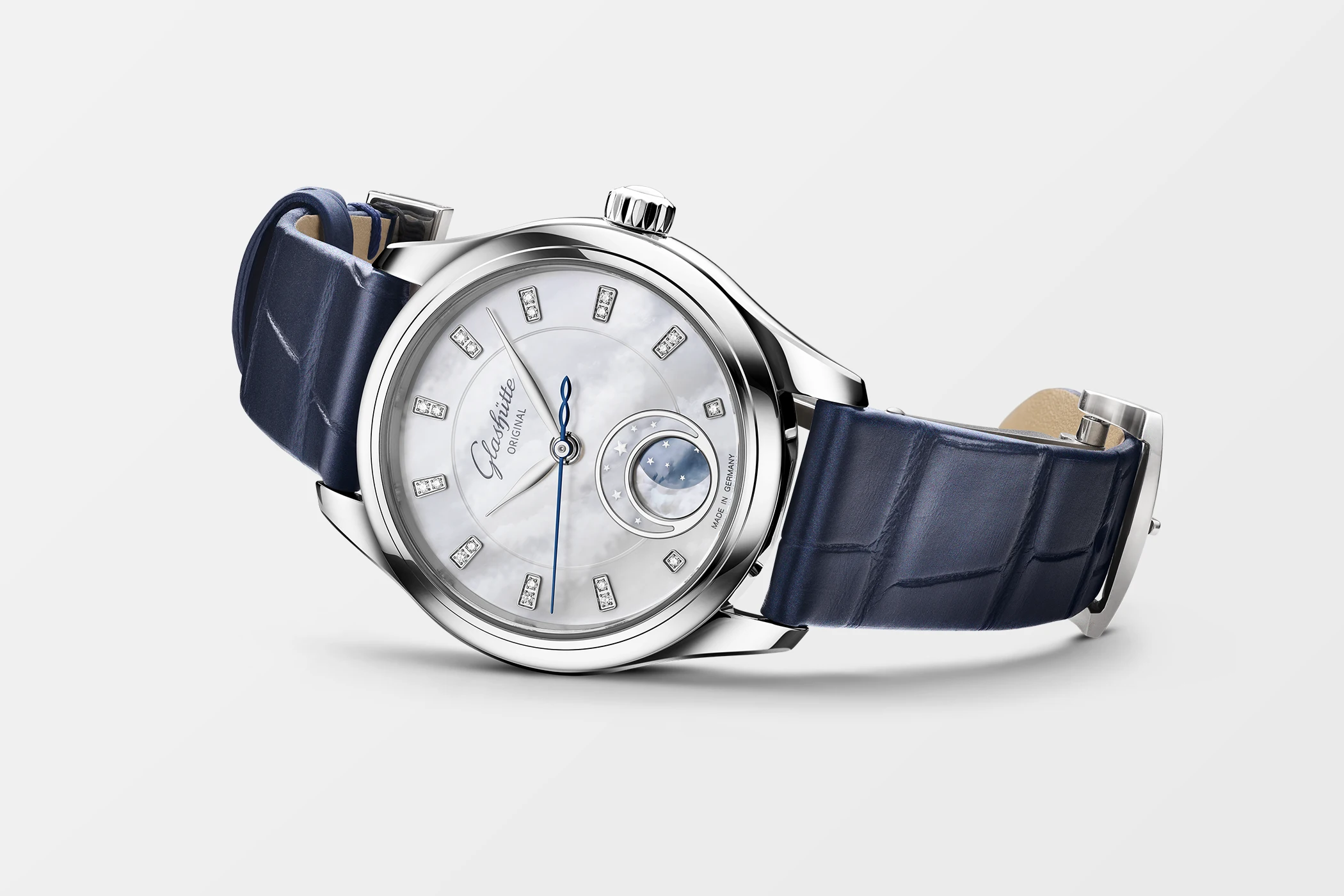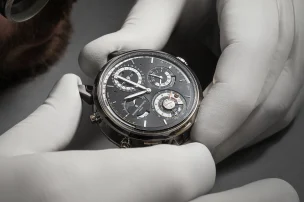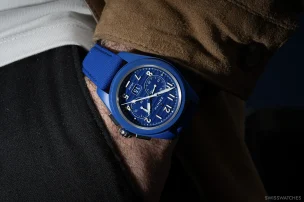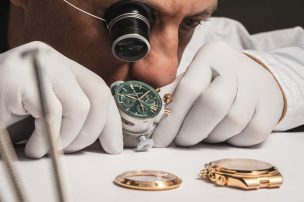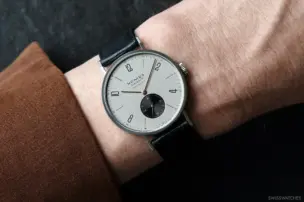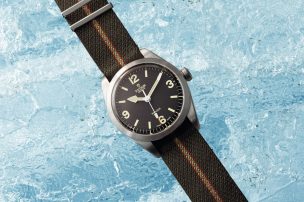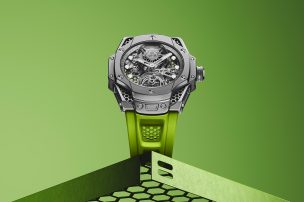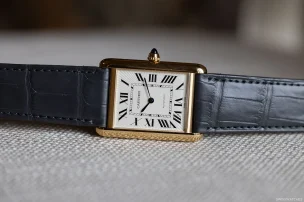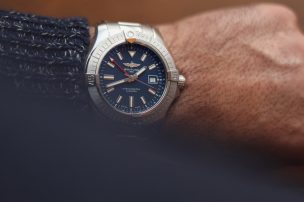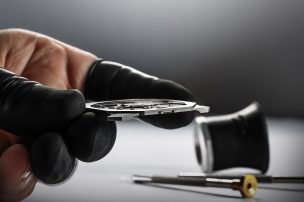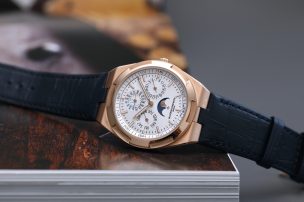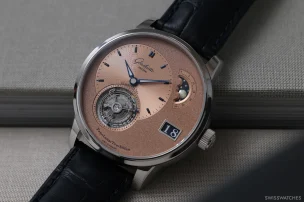

New Aqua Terra Models From Omega – And Other Sporty-elegant (Women’s) Watches With Manufacture Movements
With the release of the new Aqua Terra in a 30-millimetre format, Omega is openly targeting women. The accompanying campaign My Little Secret, featuring strong women from the worlds of music, fashion, theatre and cinema reveal their styling secrets, makes it evident that this is a ladies’ watch. But wait a minute! Do ladies’ and men’s watches still exist? Isn’t everything unisex these days? Yes and no.
Ladies’ watch, men’s watch, unisex – which one is it?
Several watch manufacturers have now dispensed with gender distinctions and no longer use the corresponding categories on their websites. However, the L and M words are often still used invisibly in the background, so that corresponding search queries still yield corresponding results.
This is certainly no coincidence. And that’s a good thing. After all, categories primarily serve as a guide when you don’t exactly know which model you want yet. ‘Ladies’ watch’ is a learned term, just like the generic term ‘men’s watch’, and most people associate similar attributes with it: not too big, rather elegant and/or decorative, preferably with bling.
Viewed objectively, classification by gender is simply a fundamental and effective tool for segmentation, a helpful guide. It’s a bit like entering the city into a navigation device before adding more specific details, such as the street and house number.
Ultimately, it is the wearer who decides which watch will adorn their wrist. The boundaries between ladies’ and men’s watches are becoming increasingly blurred: models in both categories are currently getting smaller again, making them comfortable to wear on wrists of all shapes and sizes. And when it comes to colour and pattern, supposedly masculine timepieces have long since shed their inhibitions. Only in the realm of glitter is there still room for improvement when it comes to equality.
My conclusion: it’s all a matter of time. In a few years, we will probably have found and internalised new forms of categorisation. Because without structure, things don’t work. Structure provides orientation and clarity – and supports the successful search for ladies’ watches.
Among other things, this brings us to Omega’s Aqua Terra. Because the field of ladies’ watches – you know what I mean – is both vast and impressive. And the inner workings are also improving in quality and are increasingly revealing themselves to be manufacture calibres.
Omega showcases this appreciation with the aforementioned Aqua Terra models, which are available in several different versions. I took a closer look at four of these, specifically the elegant, sporty models. The selection is completed by three additional ladies’ watches from Chopard, Rolex and Glashütte Original, all of which are priced between 5,000 euros and 13,000 euros.
Omega’s Aqua Terra: strong feminine power in a small case
After 23 years, a 30-millimetre model is being released in this collection for the first time – but that’s not all! Unlike most ladies’ watches of this size, the case does not house a quartz movement, but a brand-new mechanical movement. To be more precise, it features two Master Chronometer calibres. Both have a diameter of just 20 millimetres and fit comfortably into their 15-bar water-resistant case.
You can choose between 18-carat Moonshine gold, 18-carat Sedna gold, a two-tone combination of stainless steel and Moonshine gold, or pure stainless steel. Gemstone settings on the dial and bezel, as well as various dial options, expand the range to a full dozen.
Incidentally, Moonshine and Sedna gold are Omega’s own alloys that boast excellent colourfastness and a long-lasting shine. Here, we will focus on the four elegant, sporty and completely everyday-suitable diamond-free stainless steel versions, as well as the two two-tone variants, one of which features diamond indices.
Omega’s Aqua Terra: elegant sportiness meets sophisticated movements
While the calibre 8751 powers the two solid gold versions, all other Aqua Terra models feature the 8750. The only difference is in the choice of material for the 48-hour power reserve, double-sided winding rotor and balance bridge, which are made of gold in the 8751. The 8750, on the other hand, uses rhodium-plated stainless steel.
Both models guarantee maximum precision thanks to features such as the Co-Axial escapement, a free-sprung balance with a silicon balance spring for resistance to magnetic fields of up to 15,000 gauss, and COSC chronometer certification: tested by the independent Swiss Federal Institute of Metrology (METAS), which has certified both calibres as Master Chronometers.
The pure stainless steel models are available with black, blue, white, and lavender dials. All feature indices and faceted hands in white or Sedna gold, with the minute hand ending in a delicate tip, as on all new Aqua Terra models. Moreover, Super-LumiNova, which glows blue in the dark, ensures excellent readability at all times.
An integrated stainless steel bracelet featuring rounded, polished and brushed links, a double folding clasp and Omega’s comfort clasp secures the four steel Aqua Terra watches with their 30-millimetre cases to the wrist. The price is 6,800 euros each.
For a slightly more elegant look that is still suitable for everyday wear, the two-tone models without a diamond bezel are ideal. The stainless steel and Moonshine gold combination features a sunburst finish and lacquer on the dial that creates a shimmering silver aesthetic. The applied elements are made of 18-carat Moonshine Gold, while the hands are made of 18-carat yellow gold with a Moonshine Gold PVD coating. The indices and hands are also filled with white Super-LumiNova and glow blue in the dark.
The latter is also the case with the second two-tone Aqua Terra. With its brown sunburst lacquer dial and particularly beautiful sparkling diamond indices, it is one of the more striking versions among Omega’s new 30-millimetre watches. It features a combination of stainless steel and Sedna gold, which is also used for the appliqués and hands.
Both two-tone versions are complemented by a two-tone stainless steel bracelet, which otherwise has the same characteristics as the pure stainless steel version. The price is 11,400 euros or 12,200 euros for the model with diamond indices.
Chopard and the cheerful diamonds of Happy Sport
A timeless icon and all-time classic, Chopard’s Happy Sport collection has been around since 1993 and has enjoyed great popularity among women for just as long. This can certainly be attributed in part to its versatility, which has repeatedly established Chopard as a pioneer in the world of luxury watches for women.
The Happy Sport was one of the first watches to combine stainless steel with diamonds. But the five sparkling stones aren’t merely set on the bezel or case: they move freely, dancing playfully between two sapphire crystals above the dial. Few watches bring as many smiles as the Happy Sport – except, of course, the Happy Diamond, which has been letting diamonds roam freely since 1976.
A dedicated manufacturing facility for smaller Chopard watches
Since 2018, the Happy Sport has brought a smile to the faces of those who appreciate sophisticated watchmaking – especially when viewing it through the sapphire crystal caseback. That year, Chopard introduced the 09.01 C automatic movement, developed specifically for the Happy Sport. Today, it also powers other small-format models from the brand, thanks to its compact dimensions of just 20.4 x 3.65 millimetres. It offers a power reserve of 42 hours.
The Happy selection is extensive. Diameters range from 25 to 43 millimetres, and materials include all shades of gold as well as stainless steel. In addition, there are numerous dial colours, versions with coloured gemstones, various bracelet options, oval cases and even a chronograph in the cheerful Chopard family.
If you want to go for something sporty and chic that is suitable for all occasions and outfits, then you can’t go wrong with the simple stainless steel version. The best option is the comfortable 33-millimetre diameter, which has been adorning female wrists since 2021. The version with a stainless steel case, silver or ivory dial and leather strap costs 8,860 euros or 8,930 euros respectively. If you prefer a stainless steel strap, it will cost 10,500 euros.
Rolex and the Oyster Perpetual in delicate colours
At this year’s Watches & Wonders, the new Land-Dweller stole the spotlight from all other releases thanks to its crown. And to be fair, there wasn’t much new to discover in the Oyster Perpetual. But it doesn’t need to be. It continues to shine as a loyal, reliable companion that lets its wearer take centre stage: its role is to complete the look with luxurious understatement.
Now it fulfils this role with a trendy lavender hue on the matt lacquered dial of the 28-millimetre version. This version is equipped with the manufacture calibre 2232, which plays a key role in transforming this rather innocuous-looking watch into a truly robust timepiece with mechanical sophistication.
Patented reliability from Rolex
The calibre 2232 is equipped with the Syloxi hairspring made of silicon, patented by Rolex in 2014 and manufactured entirely in-house. In addition to its resistance to magnetic fields, it offers high stability in the face of temperature fluctuations and is extremely resistant to shocks. The calibre 2232 is also secured by the Paraflex anti-shock system and has a power reserve of approximately 55 hours.
Incidentally, the Oyster Perpetual line carries a very special significance for Rolex. It is the successor to the Oyster from 1926, the world’s first waterproof wristwatch, and was launched in 1931 as the first waterproof wrist chronometer with automatic winding. It also features the Twinlock winding crown, introduced in 1953, which is hermetically screwed to the case and significantly contributes to its water resistance of up to 10 bar.
Depending on the material, the Twinlock system can be identified by a dot, two dots, or a line on the crown. For the Oyster Perpetual, it is always a line, as watches in this line are made exclusively from stainless steel. The new versions feature robust Oystersteel, a high-performance 904L steel that has been manufactured for Rolex since 1985.
Available with a three-row metal bracelet, also made from Oystersteel, the 28-millimetre Oyster Perpetual with a lilac dial comes with a price tag of 5,800 euros.
Glashütte Original and a custom-made movement for the Serenade Luna
Last year, Glashütte introduced the Serenade Luna collection, combining jewellery and mechanical watchmaking. The brand, which belongs to the Swatch Group, developed a special manufacture calibre for these models, which embody feminine elegance and span a diameter of 32.5 millimetres.
35-14 is the name of the custom-made movement housed in the water-resistant (up to 3 bar) stainless steel case. The automatic movement itself measures just 26 millimetres in diameter and 3.8 millimetres in height. In adapting to its small size, the manufacturers’ designers have conceived a special oscillation system comprising four regulating screws on the balance wheel and a silicon balance spring which is insensitive to magnetic fields. Meanwhile, five-position regulation ensures reliable precision.
The 35-14 with its generous 60-hour power reserve and elaborate details is visible through the sapphire crystal caseback.
With Glashütte Original, the moon is within reach
The front is equally impressive, crafted by Glashütte Original with the same care as the inner workings. Here, the focus is on the two models, which embody elegant understated luxury without the use of gemstones or precious metals on the bezel. Instead, the focus is on the sunburst blue or shimmering mother-of-pearl dial, which features three functional and aesthetic elements.
Firstly, at 6 o’clock, there is a moon phase display that only requires adjustment after 122 years. The second design feature is the white gold hour markers, which are set with 20 brilliant-cut diamonds. A more subtle third dial accent can be found in the form of the curved infinity symbol at the end of the second hand, which is also featured in the sister collection, Lady Serenade.
The simple, elegant versions of the Serenade Luna are worn on a blue Louisiana alligator leather strap or a metal bracelet with a folding clasp. Prices are 10,900 euros (leather strap) and 12,000 euros (stainless steel strap) for the version with a blue dial, while the mother-of-pearl model costs 11,400 euros (leather strap) and 12,600 euros (stainless steel strap).
